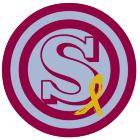About
Shane’s Future Days is a 501(c)(3) volunteer non-profit foundation whose mission is to raise awareness, research funds and assist families currently battling alveolar rhabdomyosarcoma and other high risk childhood cancers. EIN: 47-2556395
Thank you Kendra Scott for the generous necklace & matching earring donation for our upcoming Celebration of Life event!
We are honored to be supported by a company that focuses so much on philanthropy and gives back to their community.


Chase gave us permission to share.


Chase’s last school project was a poem anthology. He had to write an original poem. He wrote one amazing poem, even if he was in 3rd grade at the time he wrote it. He’s in 5th now. I wonder what he could create if he wrote more.
He never believes me when I tell him how incredible it is.
If it weren’t for CHOP’s PACT team child life specialist Kelly, our children wouldn’t be able to communicate their grief to us or others. We are so very thankful to her❤️

Thank you Adventure Aquarium for your generous ticket admission donation!
We greatly appreciate your continued support!
A big “thank you” to YETI! Check out some of the amazing items we’ll have at the COL event. We love the colors!


Don’t forget to sign up early to be entered to win a YETI prize pack.



